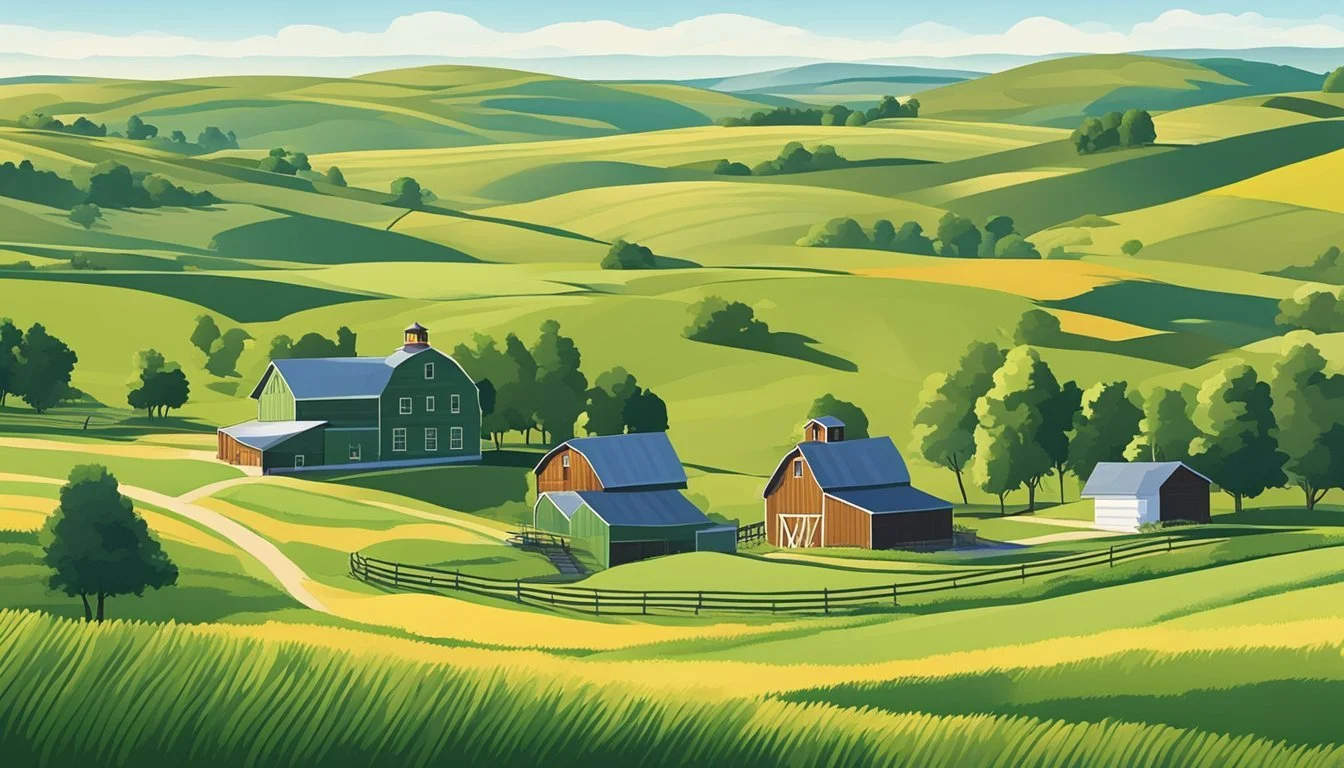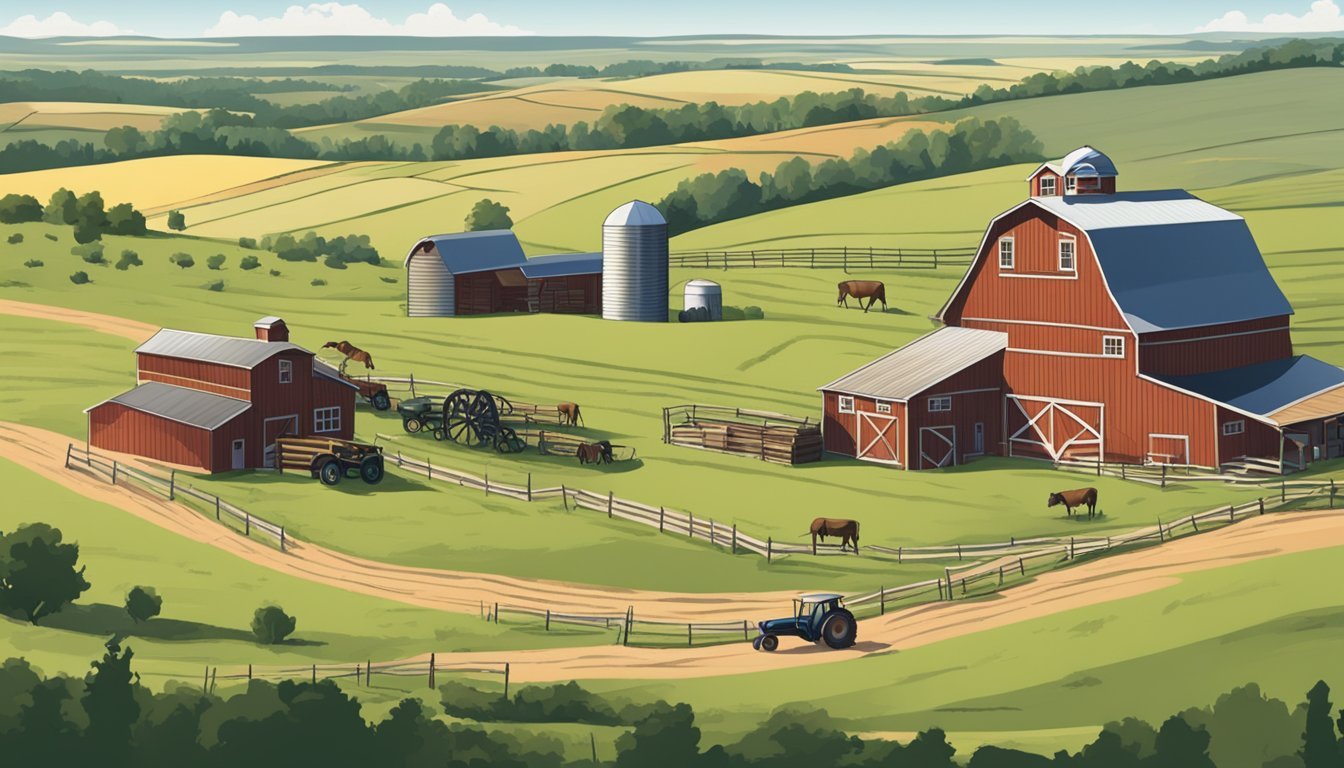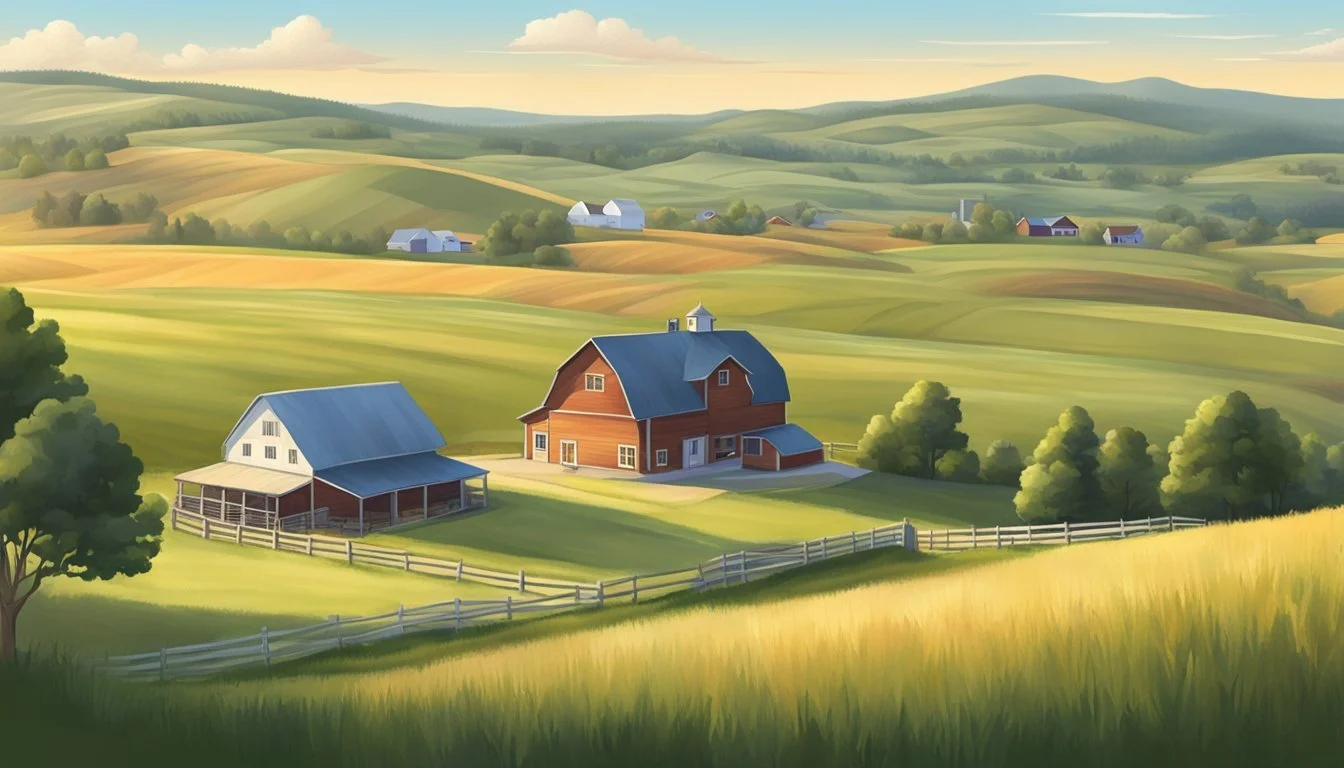Small Farms for Sale in South Dakota
Your Guide to Rural Opportunities
This Article is Part of State-by-State Guide to Buying Your First Small Farm
In South Dakota, the market for small farms is an active segment of the state's real estate offerings. With a diverse range of properties scattered across various counties, these farms present a unique opportunity for those interested in agriculture, whether they plan to engage in small-scale sustainable farming or seek a rural lifestyle. The state, characterized by its rolling plains and fertile soil, has always been a stronghold for agriculture, and the current listings of small farms for sale reflect the robust nature of South Dakota's farming heritage.
The properties on offer vary greatly in size, features, and price points, catering to a wide spectrum of buyers. From fully-equipped farms with existing infrastructure to modest parcels of land ripe for development, South Dakota provides a wealth of options. Land buyers can find smaller acreages suitable for personal use as well as larger scale lands that can support commercial farming activities. With the average price of farms in the state being substantial, it indicates a strong market that holds potential for investment and personal endeavors alike.
Accessibility to key locations and the presence of necessary utilities are additional factors that influence the value and appeal of these small farms. Prospective buyers assess the proximity to local towns and cities, such as Sioux Falls and Rapid City, while also considering the tranquility and privacy that rural life in South Dakota has to offer. The balance between the serene country setting and the convenience of nearby facilities makes purchasing a small farm in the state an attractive proposition for many.
Overview of Small Farms in South Dakota
Small farms in South Dakota vary in size and offerings, presenting numerous opportunities for agriculture enthusiasts and investors. With competitive market prices and a diverse range of land uses, these farms are an integral part of the state's real estate landscape.
Market Trends
The real estate market for small farms in South Dakota has displayed consistent activity, with properties ranging in size from under 10 to several hundred acres. Recent data suggests an average farm size of 29 acres, priced just below $1 million. This reflects a stable market with a variety of options for potential buyers.
Average Price: $1.2 million
Common Acreage: 22 to 34.4 acres
Advantages of Farming in South Dakota
South Dakota offers several advantages for farming, including a favorable climate and fertile soil. These factors contribute to a hospitable environment for crops and livestock. Additionally, the state's agriculture sector benefits from supportive zoning and land-use regulations.
Favorable Conditions:
Climate suitable for a variety of crops
Fertile soil enabling high-quality yield
Zoning and Land Use Regulations
Zoning regulations in South Dakota are designed to support farming activities and protect agricultural land. This includes designating areas specifically for agriculture where farming operations are encouraged and safeguarded against urban sprawl.
Key Zoning Focuses:
Protecting farmland
Supporting agricultural operations
Types of Farms Available
Prospective buyers will find a diverse array of farming operations in South Dakota, each offering unique opportunities based on their size and specialty. Buyers can consider a variety of acreages and farm types suited to their agricultural interests.
Cattle Ranches
South Dakota offers expansive cattle ranches, catering to buyers interested in livestock production. These ranches come with significant acreage, often necessary for grazing herds. Facilities typically include fencing, watering systems, and handling facilities to support bovine well-being and operational efficiency.
Crop Production Farms
Crop production farms in the region are characterized by their fertile soil and typically larger tracts of tillable land. These farms are dedicated to producing staple crops such as corn and soybeans. (how long do soybeans last?) Crop-specific infrastructure like grain silos and irrigations systems are commonly part of the sale.
Specialty Farms
Specialty farms focus on producing niche crops or housing unique livestock breeds. This category includes hobby farms, mini farms, and farmettes. These smaller acreages often come with residential homes and are ideal for raising goats, sheep, or poultry, or even for engaging in organic or boutique crop production.
Understanding Farm Size and Acreage
When considering the purchase of a small farm in South Dakota, it's crucial to grasp what different acreage terms mean and how farm sizes compare. This understanding will guide potential buyers in making informed decisions about the scale and suitability of a property for their specific needs.
Defining Acreage Terms
Acreage refers to the size of the land measured in acres. An acre is a unit of area covering 43,560 square feet, which is approximately the size of a football field. Understanding acreage is fundamental when evaluating farm properties. For instance, a listing might state that a farm in Minnehaha County offers 34.4 acres of land, which implies a substantial amount of space for agricultural activities.
In South Dakota, small farms can vary considerably in size:
Under 10 acres: Often suitable for specialty crops or hobby farming.
10 to 30 acres: These farms may support a diverse range of activities, including modest-scale crop production or pasturing animals.
30 to 50 acres: A farm this size is considered a small commercial operation, capable of sustaining more significant agricultural endeavors.
Comparing Farm Sizes
Farm sizes can be assessed by comparing acreage to reveal the potential for various agricultural uses. For instance:
Farm Size (in acres) Likely Use 7 Hobby farming, small-scale horticulture 22 Livestock grazing, mid-scale crop production 29 Diversified farming, larger livestock operations
A farm with 7 acres, such as one in Bon Homme County, may be ideal for those seeking a manageable space for personal or family farming. Conversely, a 22-acre property could provide broader opportunities, including livestock or crop rotation. When considering a 29-acre farm in Custer County, potential buyers should note this size could support even more extensive agricultural activity.
Each property's size should align with the buyer's intended use, taking into account the types of crops or livestock they plan to raise and the scale of operations they wish to undertake.
Buying Process for Farms
The process of purchasing a farm in South Dakota involves meticulous research, assessment of the property's value, and understanding the financing options available to make an informed and strategic investment.
Searching for Farms
Prospective buyers should initially focus on thorough research to identify available farms and land for sale. Key resources include real estate listings, agricultural property databases, and local LandSearch platforms, which list properties like small farms across South Dakota. Utilizing filtering options can narrow down the search based on criteria such as acreage, county, and price range.
Farm Valuations and Appraisals
Once potential properties are identified, it is crucial to determine the fair market value of the farm. Buyers should seek professional appraisals, which consider factors such as the land's quality, available infrastructure, water rights, and any existing buildings or facilities. Proper valuation ensures that investors understand the true worth of the farm and can negotiate effectively.
Financing Options for Buyers
Financing is an essential aspect of the farm buying process. Buyers typically have a variety of financing options, which can include:
Traditional Loans: Offered by banks or credit unions and require a down payment and proof of financial stability.
Agricultural Loans: Specialized loans tailored for farm purchases, sometimes with more favorable terms or interest rates.
Owner Financing: Where the seller provides the loan directly to the buyer, often leading to a more flexible negotiation.
Buyers should compare these options considering interest rates, repayment terms, and eligibility criteria to secure a suitable financial product for their farm purchase.
Challenges and Considerations
In South Dakota, purchasing small farms presents unique challenges that are vital to address for potential buyers. These include climate variations as well as economic factors that directly impact farming operations.
Climate and Weather Factors
South Dakota experiences a continental climate, with cold winters and hot summers. Extreme weather events, such as blizzards, tornadoes, and hailstorms, are not uncommon. It's crucial for buyers to understand these conditions since they can substantially affect crop viability and livestock health.
Temperature: Prepare for dramatic temperature fluctuations, which may impact crop selection and heating costs.
Precipitation: Water resources can be unpredictable; hence, irrigation might be necessary during dry spells.
Economic Challenges
The economics of purchasing and operating a small farm in South Dakota are affected by several factors. Land prices have been influenced by a host of issues, ranging from global demand for grains to federal stimulus payments.
Land Value: High demand for agricultural land has driven up prices, making entry difficult for new farmers.
Operational Costs: Inputs such as seeds, equipment, and labor directly impact profitability; these costs must be carefully managed.
South Dakota's agricultural landscape is marked by its reliance on grain and crop farming, making economic shifts in these markets particularly influential on local farm viability.
Final Thoughts on Purchasing a Farm in South Dakota
When considering purchasing a farm in South Dakota, prospective buyers should be well-informed and cautious. They are confronted with various options, from hobby farms to larger agricultural estates, each with its unique set of characteristics.
One must consider the average costs, which can be quite variable. For instance, properties may range broadly in price per acre. Small farms generally have more manageable acreage suitable for a variety of agrarian activities including raising goats, sheep, or poultry.
Ease of Access is another crucial factor. Some farms offer the convenience of being close to local markets and urban necessities, while others may provide a more secluded lifestyle. It's essential to assess proximity to infrastructure, as this affects both the quality of life and the operational efficiency of the farm.
Prospective owners should measure soil quality, local climate, and water rights to ensure the farm can meet their needs. South Dakota's climate can be challenging but rewarding for those equipped to handle it.
Consideration Notation Average Price Ranges according to size and locale Agricultural Use Dependent on farm type Location Proximity to towns/infrastructure Climate Can vary; important for crop/livestock
Finally, availability is ever-changing, with different regions such as Southeast South Dakota having distinct market averages. Seeking the guidance of a local real estate professional who is versed in agricultural properties can be incredibly beneficial. They ensure buyers make informed decisions that align with their farming aspirations in the diverse and opportunity-rich landscape of South Dakota.







